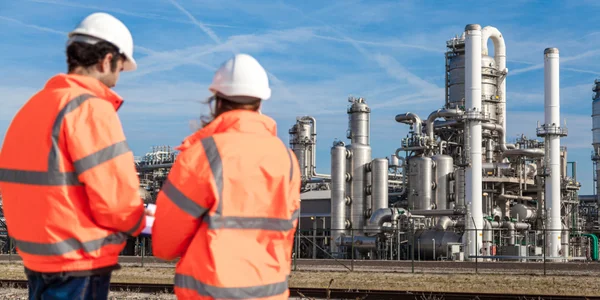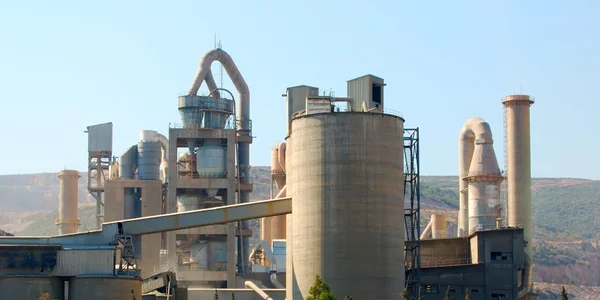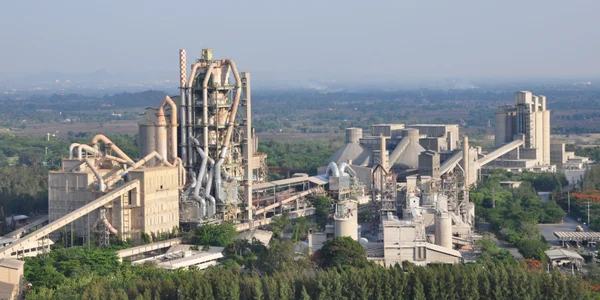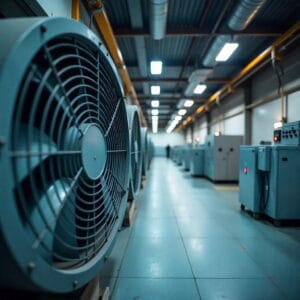Pejabat
IBU PEJABAT

Jerman
- Penapis Intensif Himenviro Technologies GmbH
Neustraße 45 - 49, 42553, Velbert, Deutschland/Jerman - +49 20534200990
PEJABAT WILAYAH

Great Britain
- Penapis Intensif Himenviro UK Limited
47, Bath Street WS13BX, Wallsall West Midlands, Great Britain - +44 1922 628893
PEJABAT WILAYAH

Emiriah Arab Bersatu
- Penapis Intensif Himenviro Technologies FZE – LLC
Pusat Perniagaan, Zon Bebas Bandar Penerbitan Sharjah, Sharjah, UAE - +971-556074697
PEJABAT WILAYAH

India
- Penapis Intensif Himenviro Private Limited
D-247/11, Sector-63, Noida - 201301, Uttar Pradesh, India - +91-120-4642-500
PEJABAT WILAYAH

India
- Penapis Intensif Himenviro Private Limited
D-247/11, Sector-63, Noida - 201301, Uttar Pradesh, India - +91-120-4642-500
PEJABAT WILAYAH

India
- Penapis Intensif Himenviro Private Limited
D-247/11, Sector-63, Noida - 201301, Uttar Pradesh, India - +91-120-4642-500
Penyelesaian Penapisan Udara dan Habuk Keluli & Logam
Industri keluli dan logam menjana tahap pencemaran udara yang tinggi, termasuk habuk halus, zarah logam dan asap, yang, jika tidak dikawal, boleh menyebabkan pencemaran alam sekitar, risiko kesihatan pekerja dan kerosakan peralatan. Sistem penapisan udara dan habuk kami disesuaikan untuk mengendalikan persekitaran permintaan tinggi ini, menangkap pelepasan daripada proses pencairan, peleburan, tuangan dan kemasan. Dicipta untuk menahan suhu tinggi dan beban zarah, penyelesaian kami meningkatkan kualiti udara, meningkatkan pematuhan peraturan, dan melindungi kesejahteraan tenaga kerja, memastikan persekitaran pengeluaran yang lebih bersih dan selamat.
Proses Penapisan Habuk dalam Industri Keluli & Logam
Relau arka elektrik digunakan untuk pembuatan keluli binaan, keluli gred tinggi, dan keluli tahan karat. Tambahan pula, ia digunakan untuk pembuatan kristal karbida dan sintetik.
Loji penyingkiran habuk untuk relau arka elektrik mengekstrak sepenuhnya dan membersihkan gas buangan utama relau arka, serta sebarang gas sisa sekunder yang dihasilkan semasa peleburan, larian atau semasa pemuatan dan penyahladangan. Gas buangan yang terbentuk dalam relau kuali, semasa pengendalian bahan dan dalam tumbuhan bersambung lain diekstrak dan dirawat.

Penapis untuk tudung bumbung
Tapis untuk EAF
- 1. Tudung bumbung
- 2. Penapis untuk penutup bumbung
- 3. Ventilator
- 4. Cerobong asap
- 5. Relau arka elektrik
- 6. Tiub yang disejukkan dengan air
- 7. Penukar haba
- 8. Tapis untuk EAF
- 9. Ventilator
- 10. Penukar
Spesifikasi yang diperlukan
Tapis Tajuk PJM
Data reka bentuk biasa | Tudung bumbung |
|---|---|
Isipadu gas | 1,000,000 |
Suhu gas | 80 |
Jenis habuk | Sisa pembakaran oksida besi |
Kandungan habuk yang tinggal | < 10 |
Kandungan habuk gas mentah | < 5 |
Pembersihan | dalam talian / luar talian |
Medium penapis | Poliester |
Reka bentuk yang dilindungi letupan | tidak perlu |
Sorben | tidak perlu |
Tapis Tajuk PJM
Data reka bentuk biasa | Relau arka elektrik |
|---|---|
Isipadu gas | 120,000 |
Suhu gas | 120 |
Jenis habuk | Sisa pembakaran oksida besi |
Kandungan habuk yang tinggal | < 10 |
Kandungan habuk gas mentah | < 5 – 10 |
Pembersihan | dalam talian / luar talian |
Medium penapis | Poliester |
Reka bentuk yang dilindungi letupan | tidak perlu |
Sorben | tidak perlu |
Aplikasi untuk Kawalan Habuk Keluli & Logam
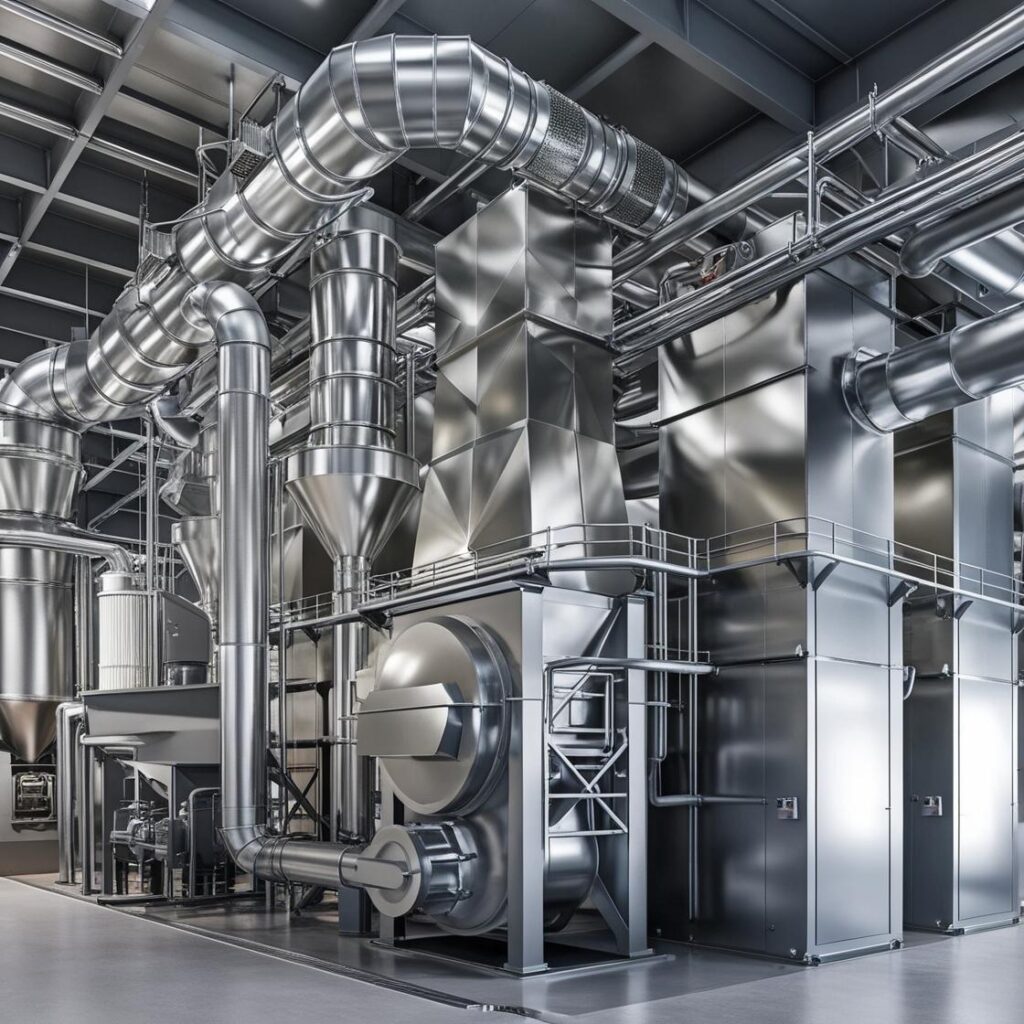
Mengawal habuk dan asap yang dikeluarkan semasa peleburan dan peleburan, menangkap zarah berbahaya yang dijana dalam relau suhu tinggi.
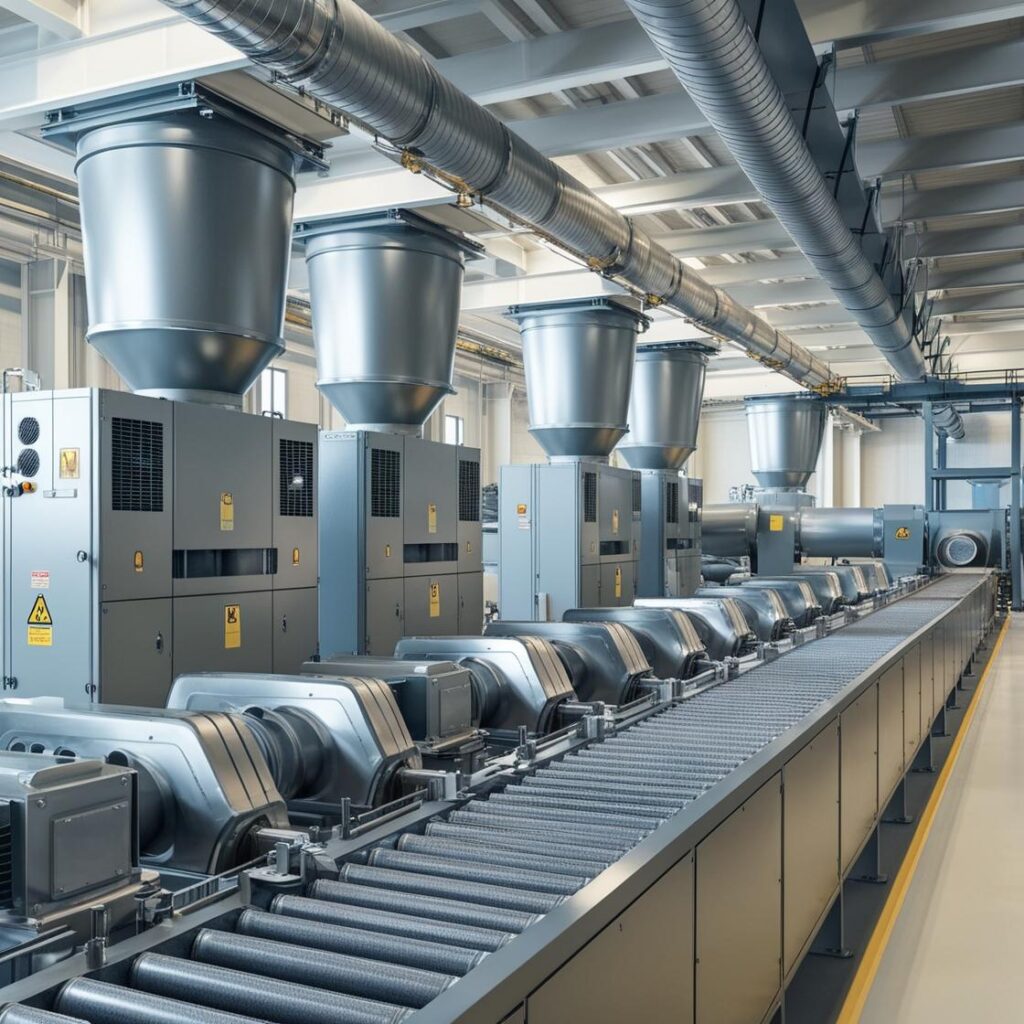
Mengurangkan pelepasan daripada operasi tuangan, menangkap zarah bawaan udara dan asap logam yang boleh menjejaskan kualiti udara.

Menanggalkan habuk halus dan pencukur logam yang dihasilkan semasa mengisar dan menggilap, menghalang bahan cemar daripada menjejaskan kualiti produk dan keselamatan pekerja.
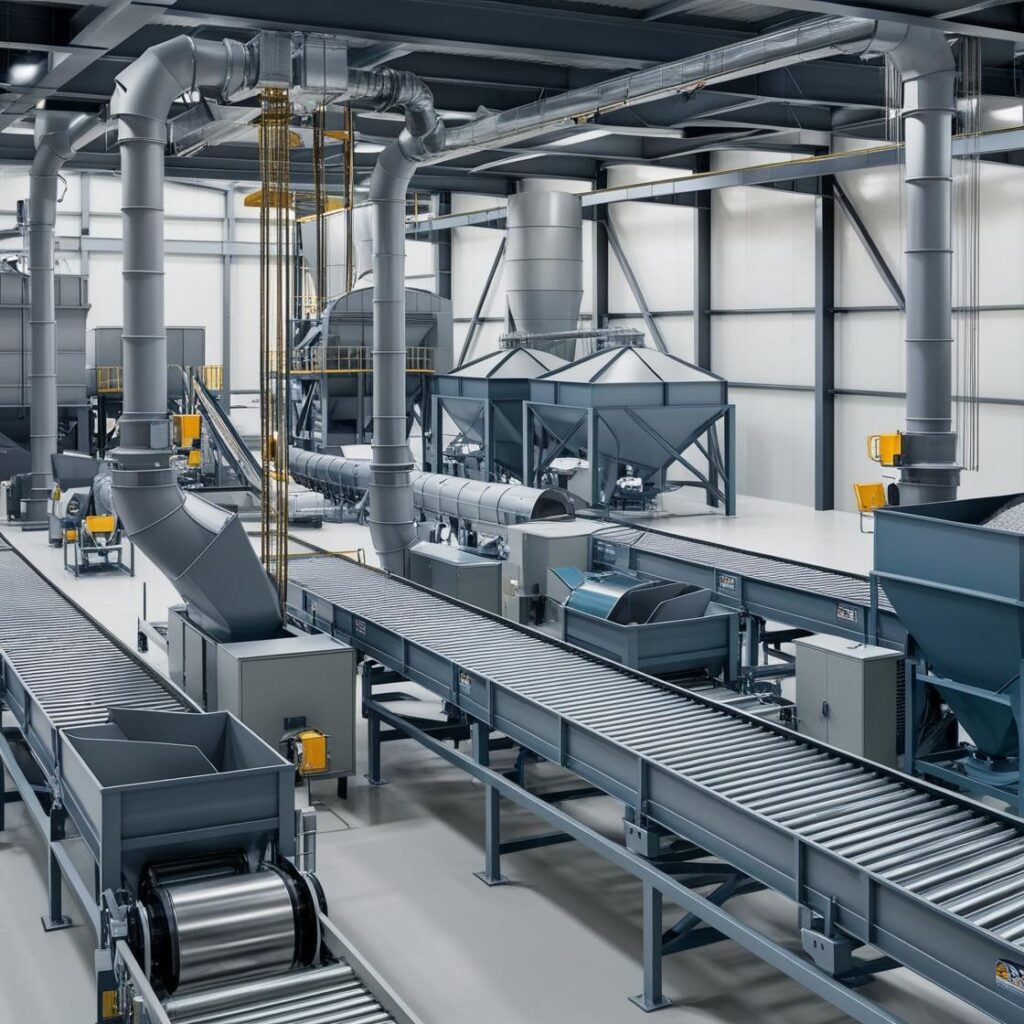
Mengawal habuk yang dijana semasa pengendalian bahan, pengangkutan dan penyimpanan, meminimumkan pelepasan zarah ke dalam persekitaran kerja.
Landskap Kawal Selia untuk Kawalan Habuk |
|---|
Pematuhan Standard Kualiti Udara |
Pematuhan Kesihatan & Keselamatan Pekerja |
Pencegahan Bahaya Kebakaran & Letupan |
Pematuhan Perlindungan Alam Sekitar |
Pemantauan Pelepasan Masa Nyata |
Rintangan Haba |
Penyelenggaraan & Masa Henti yang Dikurangkan |
Jaminan Kualiti Produk |
Kos Operasi yang Lebih Rendah |
Cabaran Kawalan Habuk |
|---|
Tahap Habuk dan Wasap yang Tinggi |
Risiko Kesihatan Pekerja daripada Zarah Logam |
Peraturan Alam Sekitar yang Ketat |
Bahaya Kebakaran & Letupan |
Pencemaran Produk Akhir |
Hapusan Habuk Melelas pada Peralatan |
Keperluan Toleransi Suhu |
Menguruskan Isipadu Pengumpulan Habuk yang Besar |
Meminimumkan Masa Henti Berkaitan Penyelenggaraan |
Pertimbangan Utama untuk Kawalan Habuk yang Berkesan |
|---|
Tangkapan Sasaran di Titik Pelepasan |
Ketahanan Di Bawah Suhu Tinggi |
Aliran Udara & Kawalan Tekanan Dioptimumkan |
Bahan Penapisan Tahan Panas |
Protokol Penyelenggaraan Tetap |
Pematuhan Standard Industri |
Fleksibel, Penyelesaian Tersuai |
Pengurangan Risiko untuk Bahaya Pembakaran |
Sistem Khusus untuk Peringkat Pengeluaran Berbeza |
Berhubung dengan kami untuk Perundingan Pakar
Terokai Perkhidmatan Kami yang Lain!
Soalan Lazim
Dalam pemprosesan keluli dan logam, sistem penapisan biasa termasuk penapis baghouse, elektrostatik precipitator (ESP), penyental basah dan pemisah siklon. Penapis baghouse menggunakan beg fabrik untuk menangkap zarah habuk, manakala ESP menggunakan cas elektrik untuk mengeluarkan zarah daripada gas ekzos. Penyental basah mengeluarkan bahan pencemar dengan memasukkan cecair penyental, dan pemisah siklon menggunakan daya emparan untuk memisahkan habuk daripada aliran gas. Pilihan sistem bergantung kepada faktor seperti saiz zarah, suhu gas, dan keperluan proses tertentu.
Sistem penapisan meningkatkan kualiti udara dengan menangkap dan menyingkirkan bahan zarah dan bahan pencemar yang dijana secara berkesan semasa pemprosesan logam. Dengan mengurangkan pelepasan, sistem ini membantu kemudahan mematuhi peraturan dan piawaian alam sekitar, dengan itu meminimumkan kesan alam sekitar dan mempromosikan tempat kerja yang lebih selamat.
ESP menawarkan kecekapan tinggi dalam mengeluarkan zarah halus, mencapai kecekapan sehingga 99%, yang amat bermanfaat dalam pembuatan keluli di mana pelepasan gas serombong selalunya mengandungi zarah habuk halus. Mereka mampu mengendalikan isipadu gas yang besar dan beroperasi dengan berkesan pada suhu tinggi. Selain itu, ESP mempunyai penurunan tekanan yang agak rendah, menyebabkan penggunaan tenaga yang lebih rendah semasa operasi.

